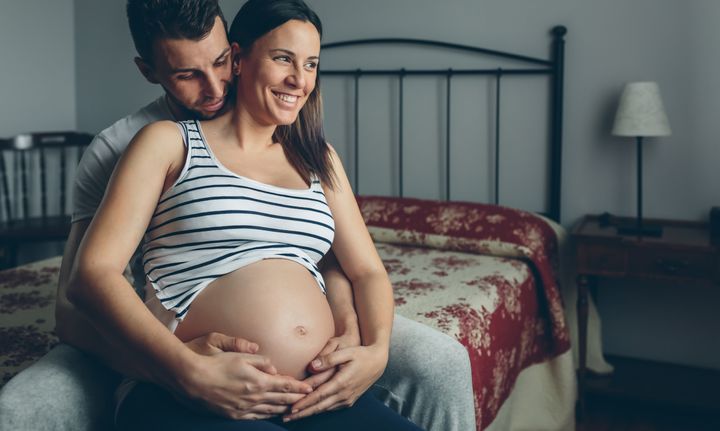Anyone who has been in a school playground will be familiar with the endless childhood myths that exist about the birds and the bees, but what happens when we grow up and still aren’t sure how to separate fact from fiction when it comes to sex and pregnancy?
Speculation and misinformation is rife, even among those who are definitely old enough to know better, which means whether we want to get pregnant (or actively don’t), we are often left pondering the answers to those questions we are too embarrassed to ask.
“I always wondered whether curry and sex could actually bring on labour,” says Tom Bourlet on Twitter. “It always seemed like something a guy just made up.”

Unfortunately for those who want to justify a takeaway at 40 weeks, NCT says it’s more myth than medical: “People believe eating a curry will bring on labour, as it can stimulate the bowels which in turn stimulate the uterus.”
“There is no medical evidence to support any of this,” agrees Mostafa Metwally of the British Fertility Society.
But what about the other myths out there? Do any of them actually hold any truth and which ones do we definitely need to stop believing?
False: Bad morning sickness means you’re having a girl.
You might have heard that if you spend your first trimester throwing up that you can start painting the nursery pink, but you might want to hold off on the DIY. Morning sickness is actually thought to be caused by an increase in hormones in the early stages of pregnancy, and not by gender, says NCT. Morning sickness affects more than 50 per cent of pregnant women.
False: A high bump means you’re having a boy.
Another old wives’ tale that claims to predict the gender of your baby is the position of the bump – namely that a higher bump means it is male and a lower bump means female. But the NCT says the shape of a woman’s bump depends on a variety of factors, including body shape, muscle tone and, of course, the position of your baby – not whether you’re having a boy or a girl.
True: You shouldn’t dye your hair during pregnancy.
If you were planning on dying your hair you might want to hurry up and do it before you conceive as dying hair during the early stages of pregnancy is actually discouraged. Mostafa Metwally of the British Fertility Society says: “Dying hair during the early stages of pregnancy can be harmful due to the effect of the hair dye chemicals being absorbed via the skin.”
False: You should be eating for two when you get pregnant.
Any excuse to eat more has to be a positive for us, but the old adage that you should be ‘eating for two’ when you’re pregnant doesn’t actually add up. In fact instead of advising women to double their calorie intake, the NHS says you only need an additional 200 extra calories each day for the final three months of your pregnancy. You should also remember folic acid and vitamin D supplements.
False: You can’t get pregnant standing up.
This myth comes under the same banner as ‘having sex in the shower won’t get you pregnant’, but neither are true. Unless you’re using an effective method of contraception every time you have intercourse you cannot stop pregnancy, regardless of location or the presence of water.
False: You increase your chances of pregnancy if you put your legs up after sex.
Unfortunately for would-be parents, this is also not true – sitting with your legs up in the air won’t “force the sperm to swim towards your ovaries”. The British Fertility Society says: “Different sexual positions, orgasm and bed rest after intercourse make no difference to your chance of conceiving.”
False (ish): You can’t get pregnant on your period.
In order to get pregnant you need to have sex within a day or so of ovulation as an egg only lives for around 12 to 24 hours after it is released. As ovulation generally happens around 14 days after the end of your period, you are unlikely to get pregnant during a period.
However the British Fertility Society said other types of bleeding, such as spotting, can be confused with a period and pregnancy can happen at that time so periods shouldn’t ever be recommend as a form of contraception.
